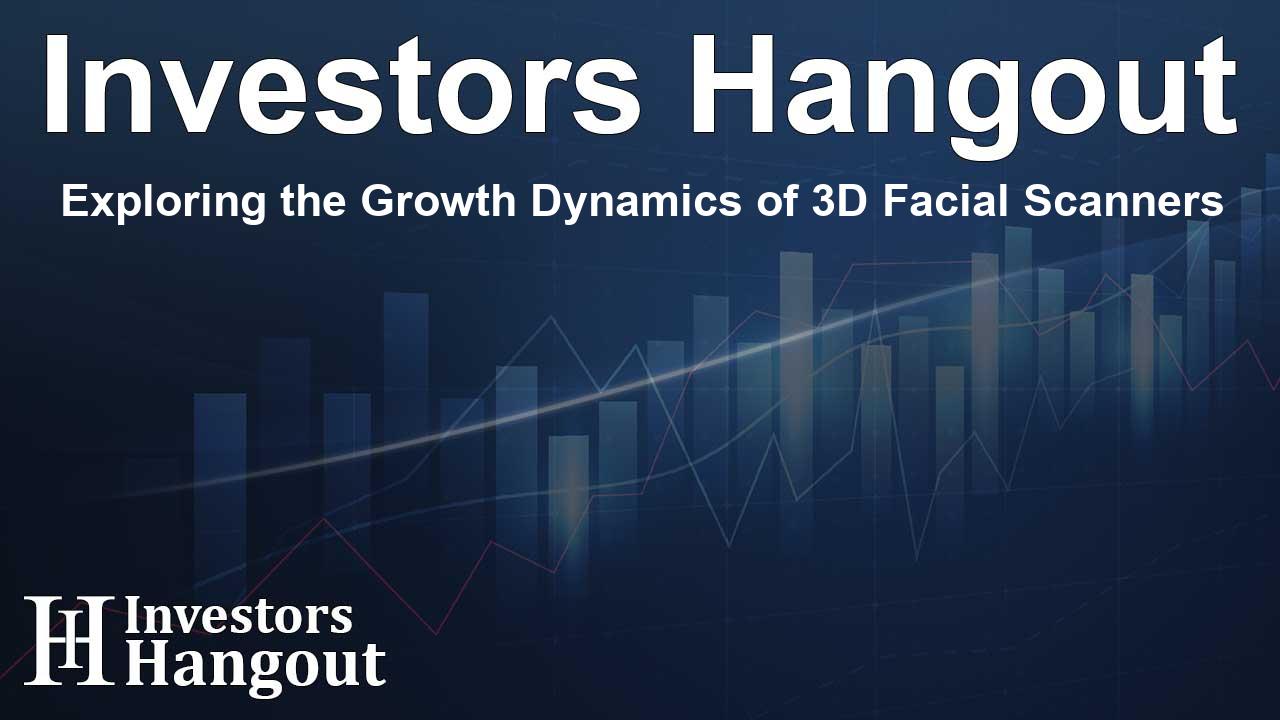Exploring the Growth Dynamics of 3D Facial Scanners

Market Overview of 3D Facial Scanners
The global 3D facial scanner market is rapidly evolving, with an impressive forecast suggesting it could reach USD 15.4 billion by 2033, featuring a robust Compound Annual Growth Rate (CAGR) of 15.6%. As we dive deeper into the specifics of this sector, we can trace the underlying technologies that are driving this growth, such as structured light and laser scanning, which have become fundamental in capturing three-dimensional facial images.
How 3D Facial Scanners Work
At the core of 3D facial scanning technology is the capability to create highly accurate digital models of a person's face. This is accomplished through innovative methods that involve projecting light patterns onto the face and capturing the deformations using specialized cameras. By analyzing the contours and textures, software processes this data to produce lifelike representations in three dimensions.
Application of Technologies
The advancements brought by artificial intelligence (AI) and machine learning (ML) significantly enhance the overall performance and efficiency of these facial recognition systems. Today, these scanners not only provide security solutions but are also widely integrated into consumer electronics for various applications including secure authentication and personalization of user experiences.
Growth of the U.S. Market
Examining the U.S. market specifically, expectations forecast growth from USD 1.3 billion by 2024 to approximately USD 4.3 billion by 2033, with a CAGR of 14.6%. This growth is heavily influenced by the need for sophisticated security measures across various industries, particularly law enforcement and border control, in response to rising identity theft and fraud incidents.
Healthcare Sector Demand
Within the healthcare segment, hospitals and clinics are projected to take the lead as the largest end-users of 3D facial scanners, potentially capturing a 43.7% revenue share by 2024. Their unique ability to offer precise imaging is critical for complex diagnostics and procedural planning.
Notable Trends in the Market
Several key trends are emerging in the 3D facial scanner market. There is a noticeable shift toward integrating cutting-edge AI and ML technologies, which allows for better analysis and interpretation of facial features. This innovation not only improves the accuracy of scans but also enhances user experiences through augmented reality (AR) and virtual reality (VR) applications.
Competitive Landscape
The competitive nature of the market sees major players like Artec 3D, DOF, and Bellus3D actively seeking to innovate their product offerings through mergers and acquisitions while also focusing on technological advancements. Factors like product differentiation and strategic partnerships are crucial for maintaining a competitive edge in this fast-paced industry.
Future Opportunities in 3D Facial Scanning
As we look towards the future, the 3D facial scanner market presents numerous opportunities, particularly in healthcare. The technology is invaluable for diagnosing craniofacial anomalies and crafting custom prosthetics. Additionally, the retail sector has shown a growing interest in utilizing these scanners for creating personalized consumer experiences, such as virtual try-ons and tailor-made beauty products.
Regional Market Insights
North America stands out as a leader in the 3D facial scanning market, anticipated to hold a significant market share. The demand for advanced security systems and innovative medical solutions are key drivers of growth in this region. Moreover, the strong presence of market leaders coupled with a high rate of adoption in commercial sectors underlines the resilience of this market.
Frequently Asked Questions
What is driving the growth of the 3D facial scanner market?
The growth is primarily driven by increasing security needs across various sectors and technological advancements in AI and ML.
Which industries are major consumers of 3D facial scanners?
Key users include healthcare institutions, law enforcement agencies, and consumer electronics sectors.
What role does artificial intelligence play in 3D facial scanning?
AI enhances the accuracy and efficiency of facial recognition processes, making systems smarter and more reliable.
How significant is the North American market for 3D facial scanners?
North America is expected to dominate the market with a revenue share of approximately 35.1% due to advanced healthcare systems and growing demand.
What future trends can we expect in the facial scanning industry?
Emerging trends include enhanced user interaction through AR and VR, alongside ongoing technological innovations in facial recognition.
About The Author
Contact Hannah Lewis privately here. Or send an email with ATTN: Hannah Lewis as the subject to contact@investorshangout.com.
About Investors Hangout
Investors Hangout is a leading online stock forum for financial discussion and learning, offering a wide range of free tools and resources. It draws in traders of all levels, who exchange market knowledge, investigate trading tactics, and keep an eye on industry developments in real time. Featuring financial articles, stock message boards, quotes, charts, company profiles, and live news updates. Through cooperative learning and a wealth of informational resources, it helps users from novices creating their first portfolios to experts honing their techniques. Join Investors Hangout today: https://investorshangout.com/
The content of this article is based on factual, publicly available information and does not represent legal, financial, or investment advice. Investors Hangout does not offer financial advice, and the author is not a licensed financial advisor. Consult a qualified advisor before making any financial or investment decisions based on this article. This article should not be considered advice to purchase, sell, or hold any securities or other investments. If any of the material provided here is inaccurate, please contact us for corrections.
